
© Dave Morgan, courtesy the Royal Opera House. (Click image for larger version)
Wendy Whelan
Restless Creature: Ego et Tu, Waltz Epoca, The Serpent and the Smoke, First Fall
London, Linbury Studio Theatre
22 July 2014
wendywhelanproject2013.blogspot.com
www.nycballet.com
www.roh.org.uk
It would be invidious to compare Wendy Whelan’s brave attempt to reinvent herself as a contemporary dancer with Sylvie Guillem’s far more mature achievement. Guillem has collaborated for many years with accomplished choreographers, mostly based in Europe. Whelan, on the point of retirement (at 46) from New York City Ballet, has only recently commissioned work from young American dance makers. She has put together a programme of four duets, the title, Restless Creature, describing her new venture. This is its first exposure outside the United States, after a spring tour had to be cancelled because of Whelan’s hip surgery.
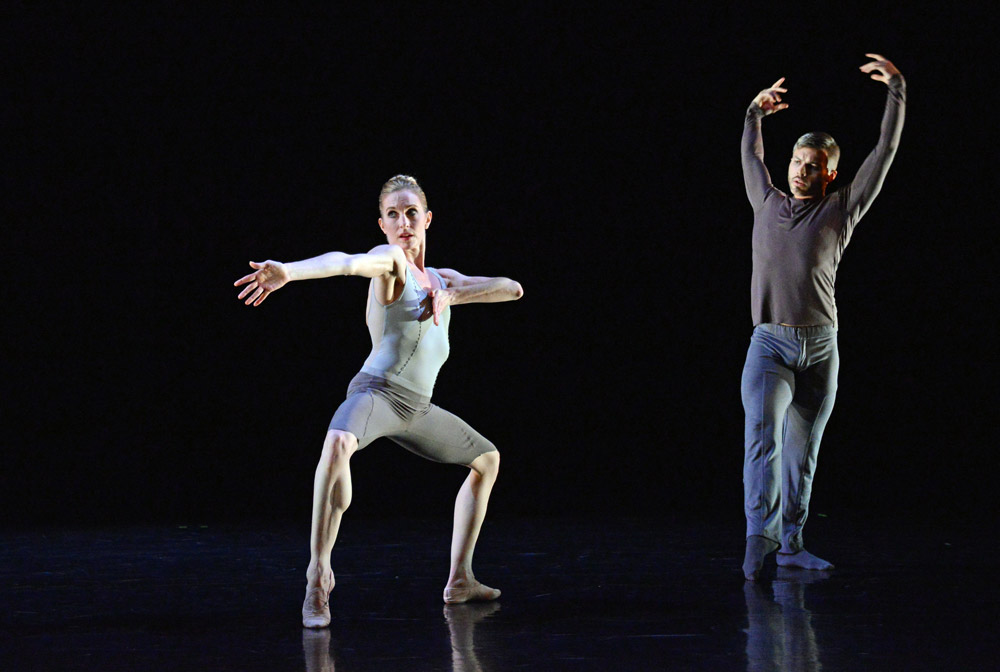
© Dave Morgan, courtesy the Royal Opera House. (Click image for larger version)
She, like Guillem, has spent her earlier career as a remarkable artistic instrument for performing ballet – the equivalent, to be fanciful, of a Stradivarius violin for classical music. The challenge for any choreographer is how to make use of such a finely-tuned physique and temperament in a contemporary idiom. Whelan has asked her chosen choreographers to perform with her so that she could absorb their personal styles and interact with them in different relationships. Two, Kyle Abraham and Brian Brooks, have their own companies in New York; Joshua Beamish is artistic director of a Canadian company, Move, in Vancouver; Alejandro Cerrudo is resident choreographer with Hubbard Street Dance in Chicago.
Perhaps because of her inexperience as a director/dancer, the four partnerships are not strikingly varied. She remains very much a ballet dancer experimenting with unfamiliar ways of moving: unfamiliar to her, but not to habitués of contemporary dance. She has discovered how to co-ordinate different parts of her body, to fall off-balance, to partner a man as well as be supported by him. The process must have been have been fascinating for her – but hardly revelatory for audiences hoping to learn more about about her as an interpretive artist or as a woman.
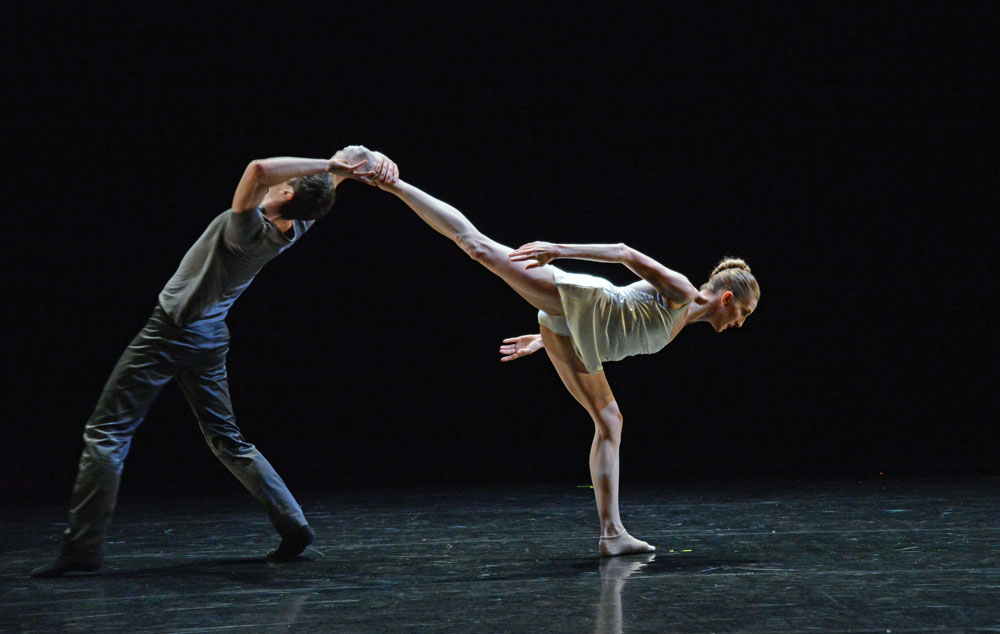
© Dave Morgan, courtesy the Royal Opera House. (Click image for larger version)
Two duets in each half of the 90-minute programme follow each other in quick succession, with just enough time for a change of costume. Her first entrance is striking. Alejandro Cerrudo, choreographer of Ego et Tu, opens the piece with a restless solo in semi-darkness, winding his arms around himself. He retreats, bringing Whelan forward in a low lift. Serene and alert, she replaces him, performing the same movements with a lighter, tauter emphasis. When he returns, she shields his eyes from behind: he could be Orpheus, seeking her Eurydice in the underworld. Continually circling him, she seems elusive even when he manages to hold her. The music, a collage of different composers, darkens in tone. They withdraw, backs to the audience, arms consolingly around each other.

© Dave Morgan, courtesy the Royal Opera House. (Click image for larger version)
In the next duet, Waltz Epoca, Whelan is shadowed by Joshua Beamish in a series of eclectic waltzes by Borut Krzisnik, a Slovenian guitarist. (All the recorded music is so loudly amplified that the sound distorts in the studio space.) She seems unaware of him until she falls back into his arms, more tango dancer than waltz partner. Their movement vocabulary is ballet-based, quirky, disjointed. Because she is so much more enthralling than he is, his fiddly activity, drawing attention to himself, becomes irritating. This duet should be about her, not him.
It turns out that an apparently indulgent solo for him allows her to change off stage into a red ball dress. When she reappears, she asserts her authority over him by putting her hands on his head to make him kneel down before her. They waltz into the darkness, her skirt swirling around them.

© Dave Morgan, courtesy the Royal Opera House. (Click image for larger version)
After the interval, Kyle Abraham contrasts his muscular fluidity with Wheelan’s sinuous angularity in The Serpent and the Smoke, to otherworldly music by German pianist Huashka and Icelandic cellist Hildur Gudnadottir. Waves of movement undulate through Abraham as the snake, mesmerised by Whelan in a smoky grey tunic and leggings. Yet again, she seems elusive, slipping away from him as they dance side by side. Even when she appears to support him in a deep backbend, her hands hardly touch his powerful bare torso. Two orange lamps on the floor outline them in the gloom. By the end, he is just visible in one corner, watching her avidly as she loosens her long hair, drifting in a shaft of light.
Her hair remains loose for the concluding duet, First Fall, by Brian Brooks, to a selection of music by Philip Glass. It is by far the most successful of her commissions (her first in 2012).
Brooks is a selfless partner, complementing her as an equal in the first section of the duet, then acting as her fulcrum in falls. They entwine arms over and again, catching each other by the elbows, negotiating low lifts as they respond to the pulse of Glass’s repetitive music or conspire to continue in silence.
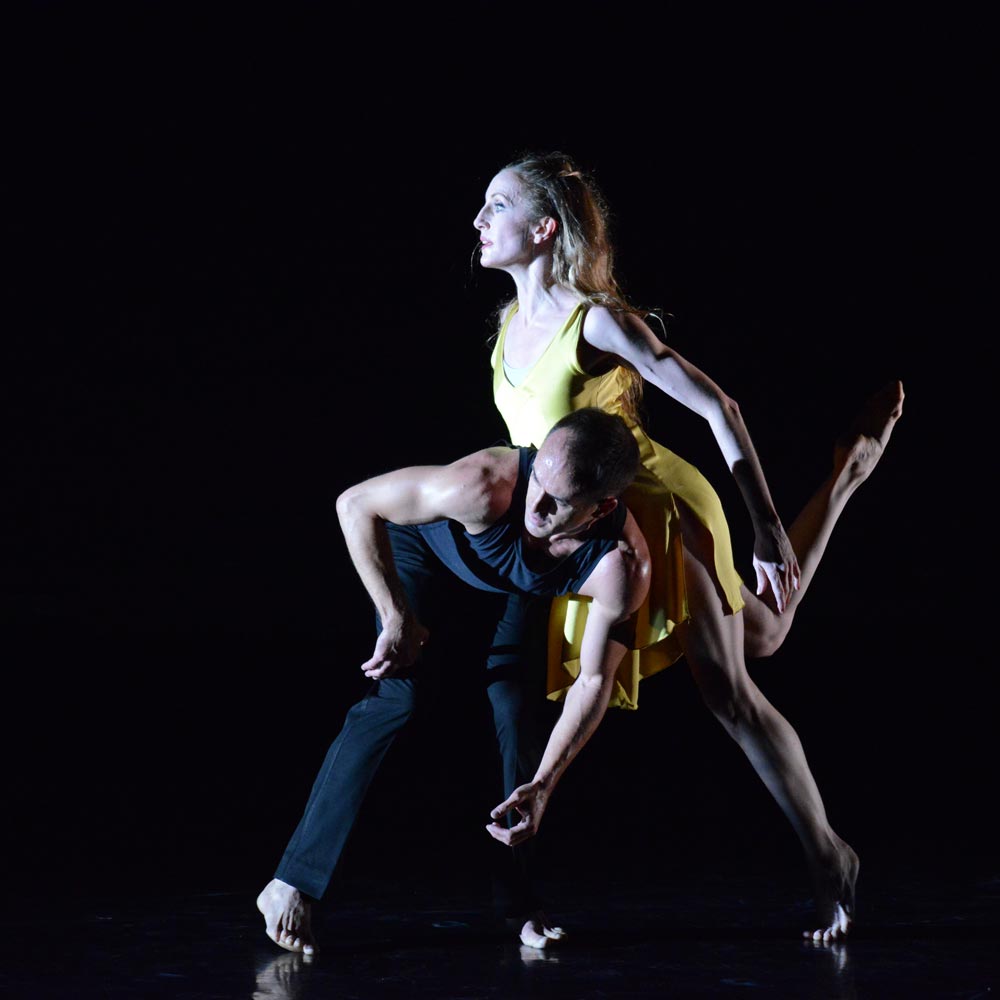
© Dave Morgan, courtesy the Royal Opera House. (Click image for larger version)
She advances in slow strides across the stage on three-quarter point, arms behind her, as she balances her abdomen on his crouched back. Then, holding herself rigid, she leans or tilts perilously off-balance, to be cushioned by his accommodating body. They become one many-limbed creature, incapable of proceeding without each other’s complicity. Brooks’s collaborative choreography has a resonance the rest of the duets lack. He’s not imposing himself or asking Whelan to imitate his way of moving; theirs is a symbiotic relationship.
Though Restless Creatures demonstrates how versatile Whelan can be, it’s still an early stage in her progress towards different ways of moving. She has very particular qualities as a neo-classical ballerina, which choreographers such as Christopher Wheeldon and Alexei Ratmansky understand and exploit. She has yet to find their equivalent in contemporary dance.















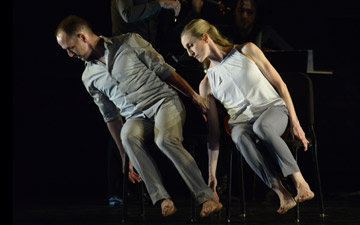
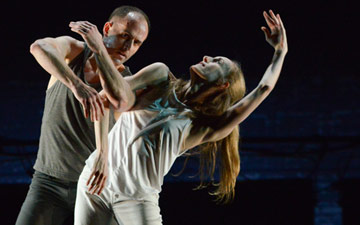
You must be logged in to post a comment.